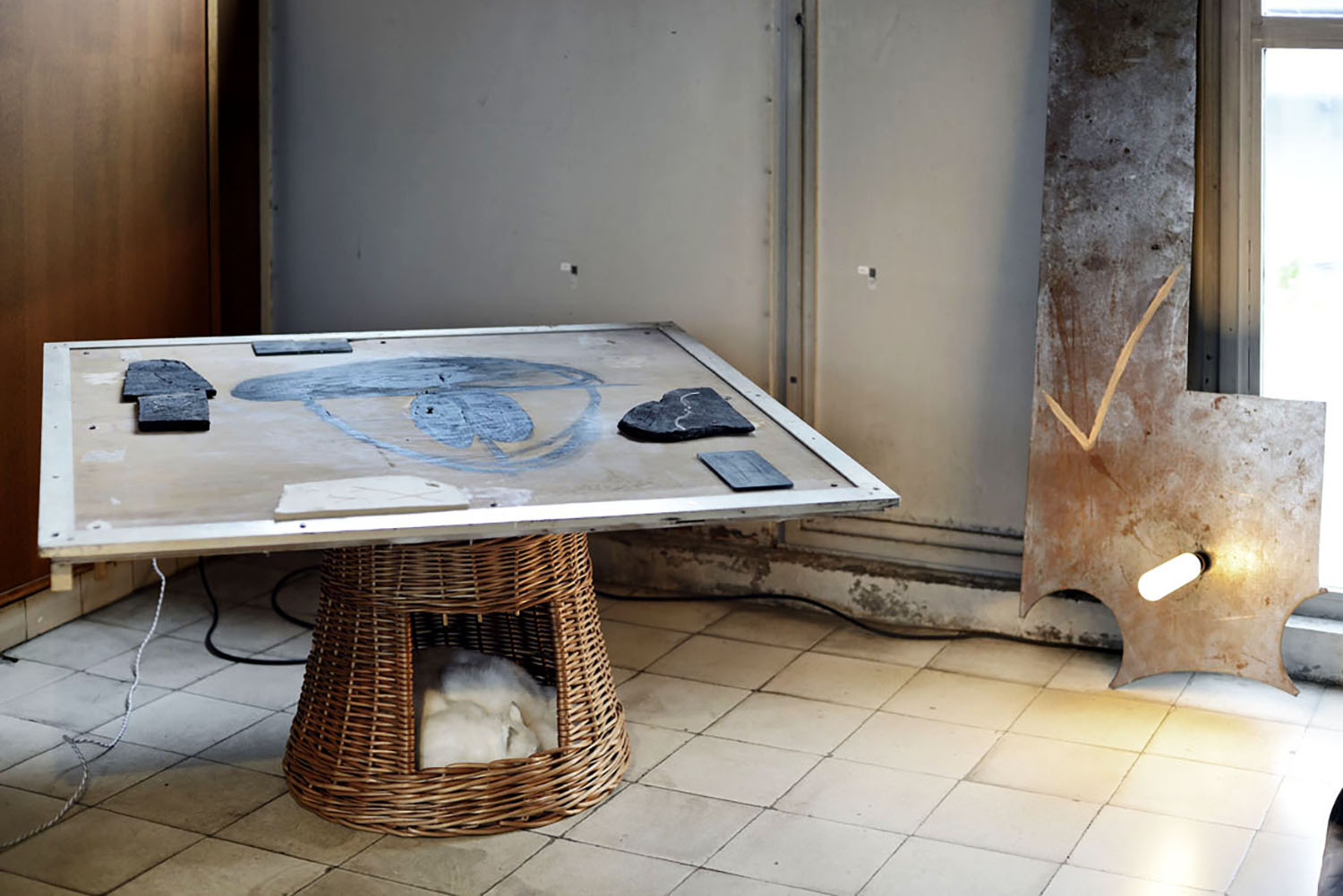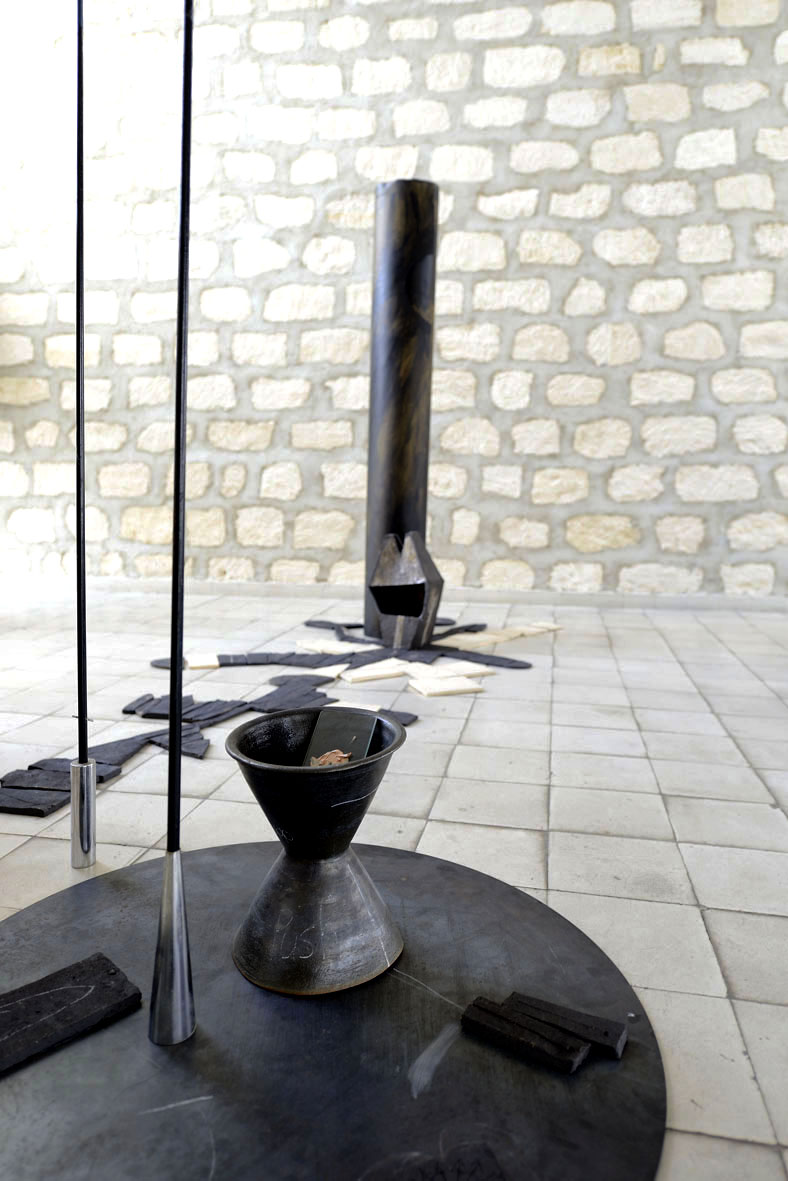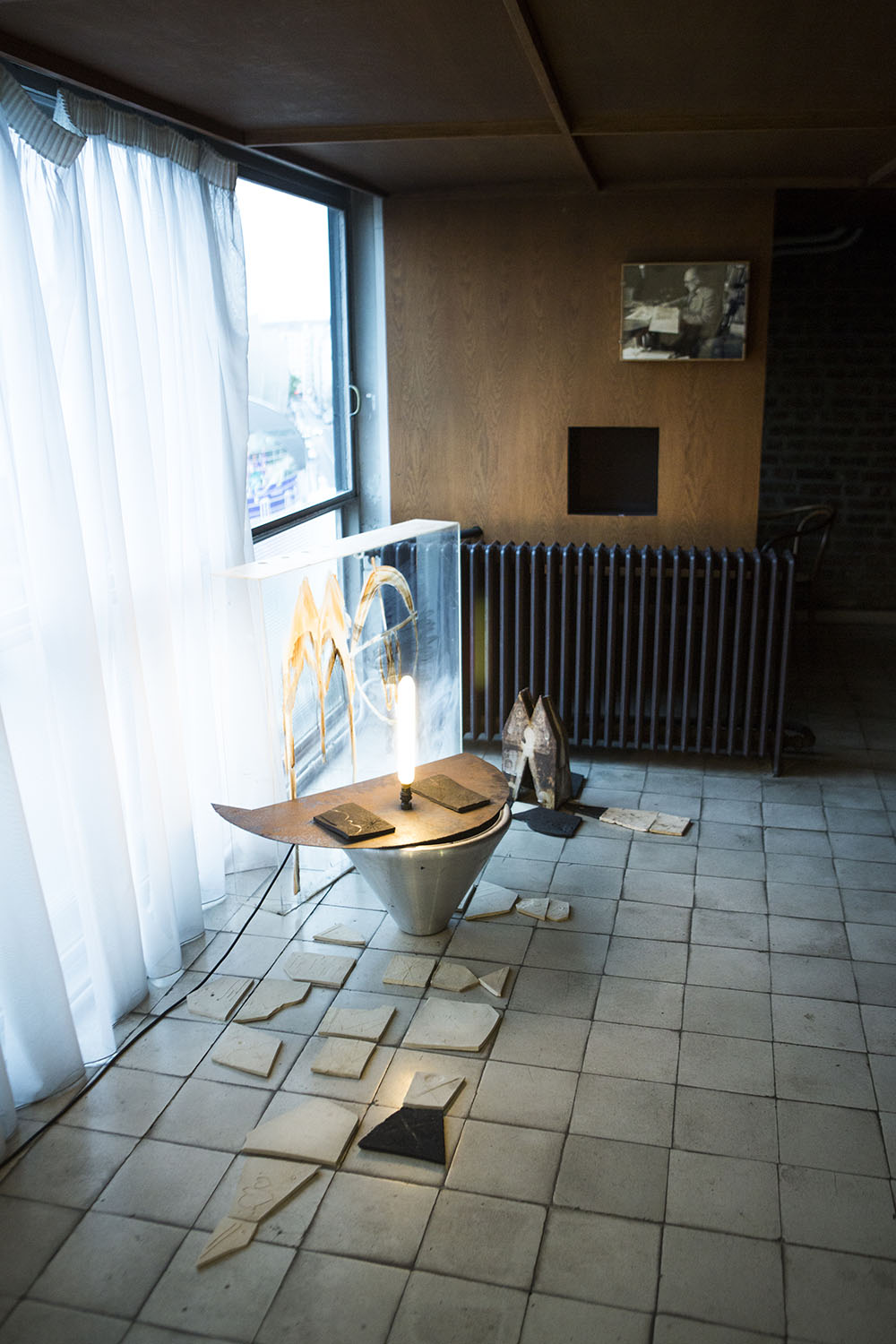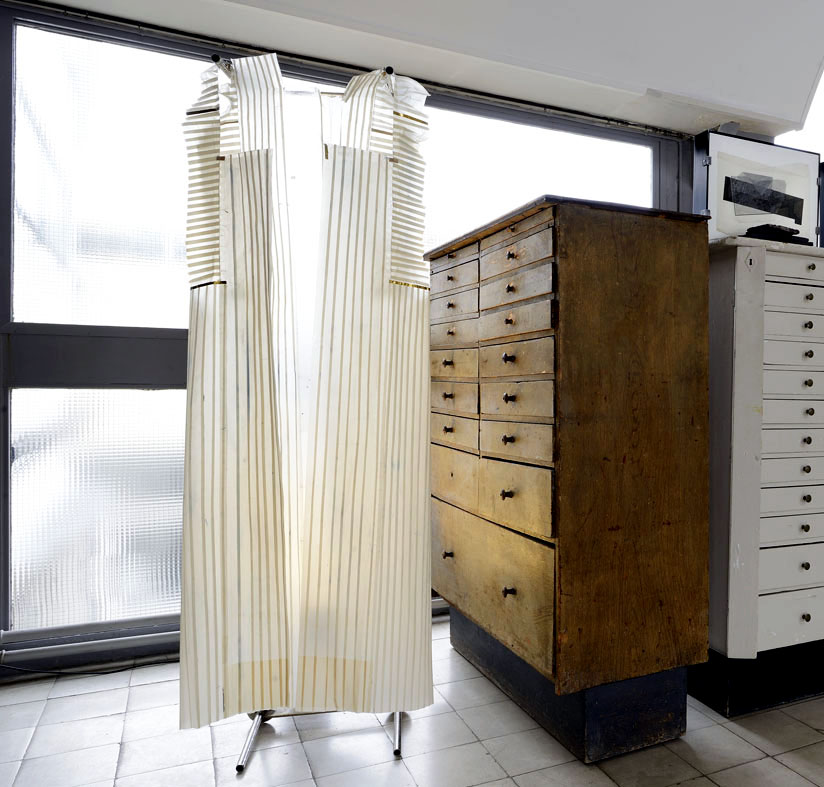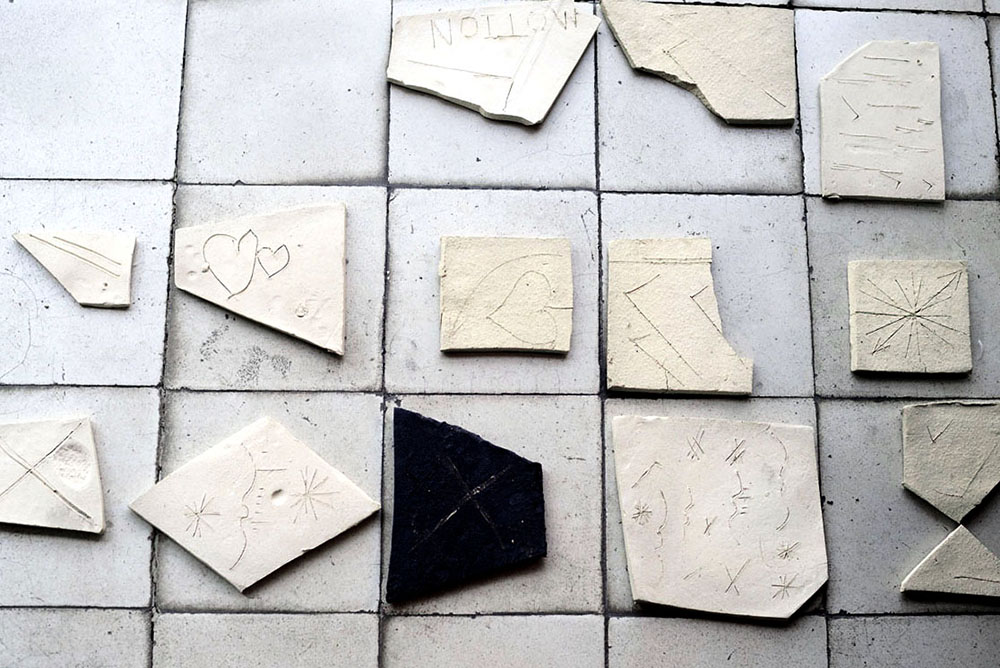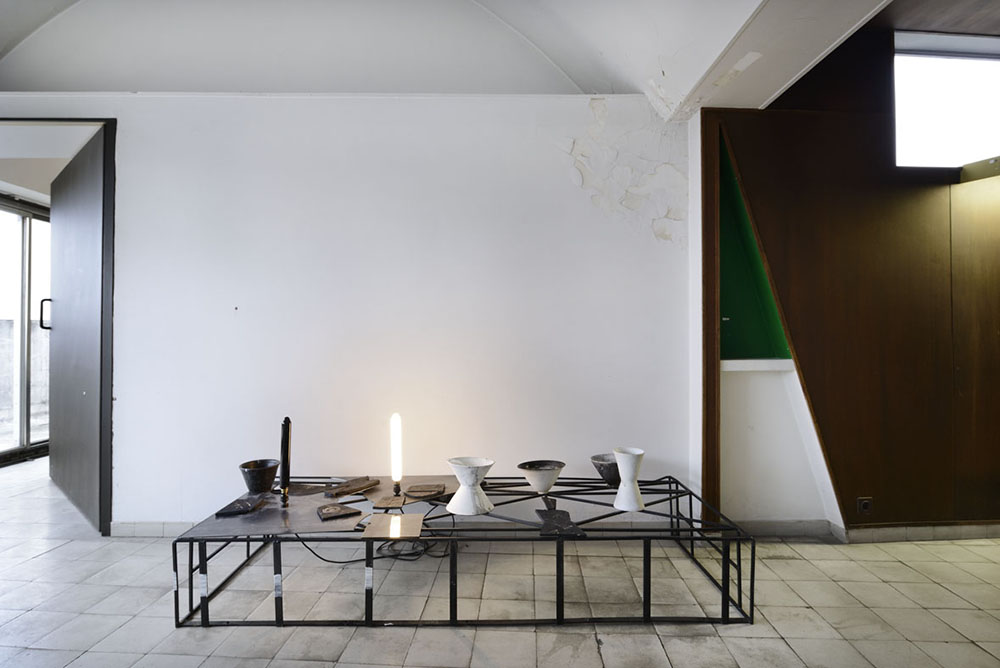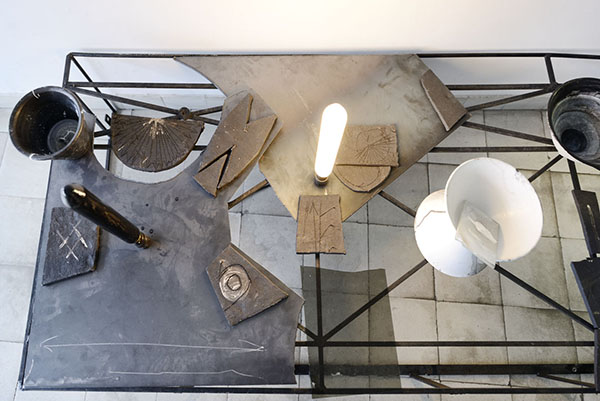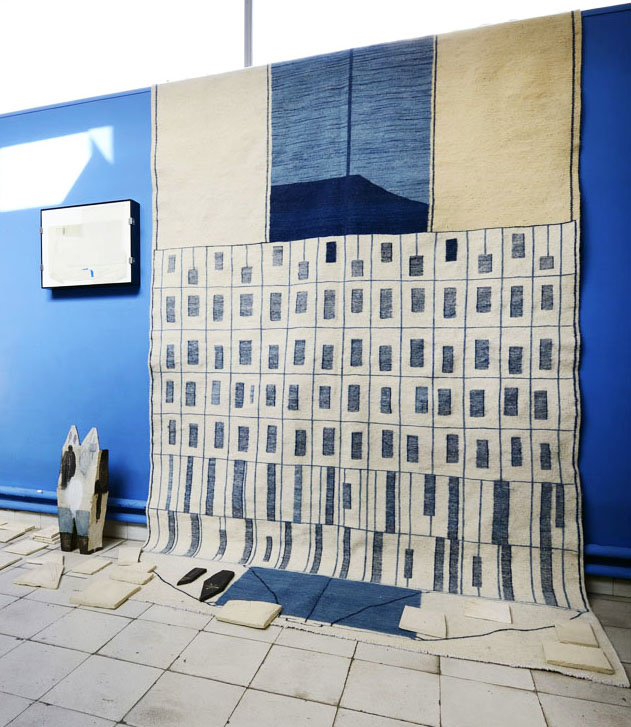He was my father, and I was an atom of him, destined to grow into him was supported by the Fondation Le Corbusier Young Artists Grant. The exhibition consisted of sculptural tableaux created for Le Corbusier’s unrestored penthouse at 24 Rue Nungesser et Coli. In 2011, the personal effects of the artist’s grandfather, Clive Entwistle (1916–76), resurfaced from a Manhattan storeroom after 30 years. The collection included extensive visual and textual materials documenting Clive’s years in Paris, London, Tangiers, and New York, as well as his early collaborations with Le Corbusier.
Drawing on the architectural practice of spolia, Entwistle engaged her grandfather’s archive through adaptive reuse, reconstructing his unrealized designs and integrating motifs from Le Corbusier’s apartment. The tableaux explored failure—personal, architectural, and material—while transforming it into reimagined forms. Each assemblage evoked fragmented domestic interiors, combining found ready-mades, prototype components, material offcuts, and commissioned objects such as ceramics, glassware, and handwoven carpets. The handcrafted pieces reflected subtle slippages from the original designs, emphasizing unpredictability and countering standardization.
Two recurring motifs emerged from the archive: a palette dominated by Prussian blue, black, brown, white, and sepia, and the notion of the Tarnhelm, a shape-shifting “cap of invisibility” drawn from Wagner’s Ring cycle, expressed in cones, spheres, and vessels. Through these, the exhibition explored transformation, distortion, and spatial-temporal liminality, merging personal history with architectural imagination.
Press:
